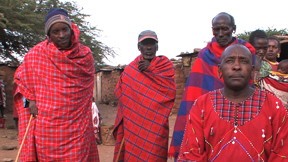The poor stay poor while the rich get rich
Director Philippe Diaz’s bleak doc attempts to explain what everybody knows
In a world where there is so much wealth, why is there still so much poverty? That is the primary question of Philippe Diaz’s latest documentary The End of Poverty?, and it’s a question to which there is no good answer.
The film paints a very bleak picture in which a small portion of the First World are willfully bleeding the Third World dry.
Diaz starts at the beginning: the British empire and the conquistadors, who helped develop Third World nations though their own legal system and also created ways to keep the people of those nations subdued. They created an economy which only exports one type of resource (the kind the rich needed), by destroying every other type of trade in order to make the people there reliant on whatever goods came in from the empire. This system made these developing nations into nothing more than prostitutes who are used until they are worthless.
As this diplomatic policy is still in action today, Diaz brings out the utter hopelessness that these people experience on an almost daily basis.
The filmmaker travels to various poverty-stricken nations such as Kenya, Brazil and regions of Spain, and obtains firsthand testimonies from the people who often work for less than a dollar a day. This, combined with interviews with Nobel Prize winning analysts, political activists and former World Bank employees, drives the point home.
World poverty doesn’t just happen; it’s created, whether by government-run organizations or their banks to further their own goals.
Diaz does an excellent job of evoking an emotional response, combining imagery with a dreary musical accompaniment that brings the concept of hopelessness and poverty to life.
Martin Sheen’s narration may be dry at times, but overall it becomes the icing on the cake.
Perhaps the film’s main weakness is that it takes too long to make its point.
There are interviews from several people in different countries all saying the same thing: “We are in poverty and barely have money to live.” This is a message that needs to be delivered, but it would be more effective if Diaz included more input from economic experts or even a single activist who travels and personally interviews these people to keep the movie flowing.
These, however, are small issues when compared with the film as a whole.
It’s still a very sobering look on world poverty and how it can be solved.
Why is it that 20 per cent of the world’s population waste 80 per cent of the world’s resources?
Published in Volume 64, Number 22 of The Uniter (March 11, 2010)







